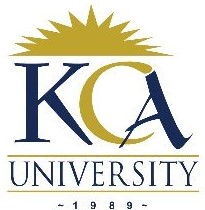
UNIVERSITY EXAMINATIONS: 2016/2017
EXAMINATION FOR THE DEGREE OF BACHELOR OF BUSINESS
INFORMATION TECHNOLOGY
BUSS 303 TECHNOLOGY AND INNOVATION MANAGEMENT
FULL TIME AND PART TIME
DATE: AUGUST, 2017 TIME: 2 HOURS
INSTRUCTIONS: Answer Question One & ANY OTHER TWO questions.
QUESTION ONE [30 MARKS]
a) Differentiate between the following set of terms (4 Marks)
i) Technology and Innovation
ii) Radical innovations versus incremental innovation.
b) The process of innovation begins with picking up various kinds of trigger signals. These might be
about technology, markets, competitor behaviour, shifts in the political or regulatory environment, new
social trends, etc. – and they could come from inside or far outside the organization. In enabling an
effective search, discuss the following:
i) Monitoring technological trends (2 Marks)
ii) Market forecasting (2 Marks)
iii) learning from others (2 Marks)
iv) Involving stakeholders (2 Marks)
c) Explain THREE roles played by universities in technology transfers (6 Marks)
d) Explain the organizations reactive and proactive business innovation strategies (6 Marks)
e) With the aid of examples, explain the advantages and disadvantages of small and large firms in regard
to innovation. (6 Marks)
QUESTION TWO [20 MARKS]
a) Explain the following terms as Used in Innovation
i) Copyright
ii) Patent (4 Marks)
b) In defining their innovation strategies, what four questions must firms be in a position to answer
about their competitors’ innovative resources compared to their own? (4 Marks)
c) Explain FOUR reasons why it is important for innovation to diffuse a move (8 Marks)
d) Discuss THREE forces that promote research and development in an organization (4 Marks)
QUESTION THREE [20 MARKS]
a) With the aid of examples example the following strategies of technology transfer: (4 Marks)
i) Conventional strategies
ii) Commercial strategies
b) Innovation is essentially about learning and change and is often disruptive, risky and costly. It is not
surprising that individuals and organizations develop many different cognitive, behavioural and structural
ways of reinforcing the status quo. Innovation requires energy to overcome this inertia, and the
determination to change the order of things.
Explain briefly any six components of an innovative organization. (6 Marks)
c) Innovate or perish’ has become the mantra of the 21st century organizations. Discuss why
technological innovation is critical for survival in a globalized competition (8 Marks)
d) Outline FOUR stakeholders of Innovation (2 Marks)
QUESTION FOUR [20 MARKS]
Innovation raises fundamental strategic dilemmas for strategists.
Innovation is more complex than just invention.
Invention involves the conversion of new knowledge into a new product, process or service.
Innovation adds the critical extra step of putting this new product, process or service into use, in the
private sector typically via the marketplace and in the public sector through service delivery.
Discuss the above INNOVATION DILEMMAS Quoting relevant live examples you have come across.
(20 Marks)
QUESTION FIVE [20 MARKS]
a) According to Porter, ‘the goal of competitive strategy . . . is to find a position in an industry where a
company can best defend itself against these competitive forces or can influence them in its favour’.
Explain FOUR generic market strategies does he suggest firms to choose from? (6 Marks)
b) Explain briefly any five factors which influence a firm’s capacity to benefit commercially from its
technology. (5 Marks)
c) Industries often follow technological trajectories according to which the relative importance of product
innovation and process innovation change over time.
Provide support for the above statement and at the same time try to critique it. (9 Marks)
